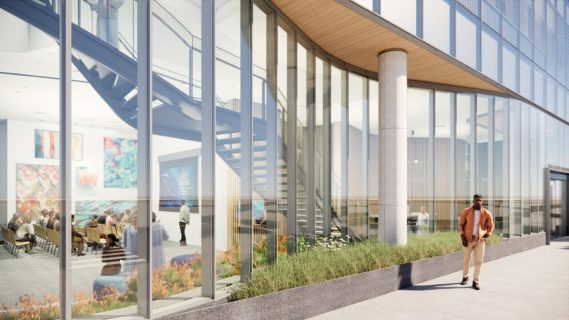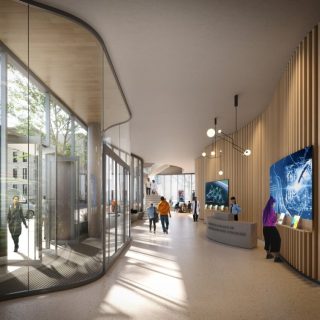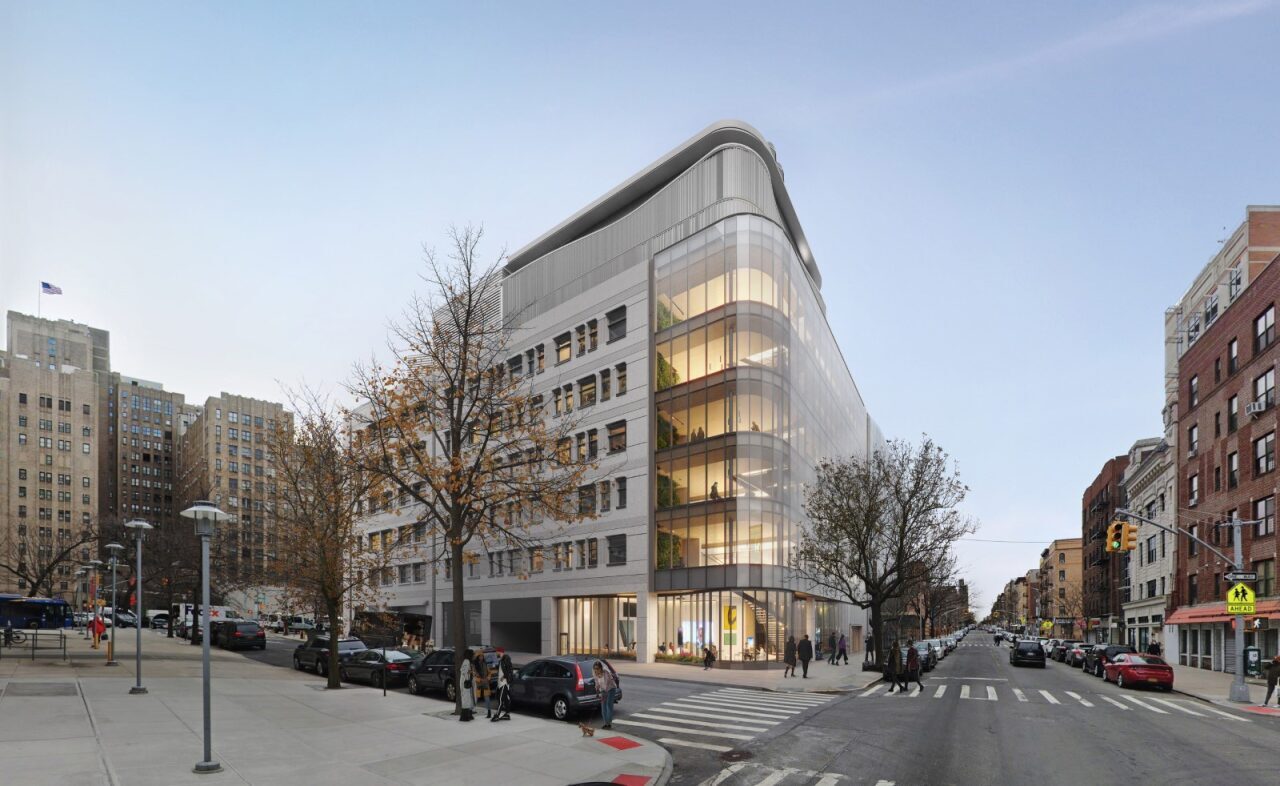Columbia University Vagelos College of Physicians and Surgeons (VP&S) is set to start building New York City’s first all-electric academic research lab building in May. The upcoming biomedical research structure, in Washington Heights crafted by Kohn Pedersen Fox (KPF) will house eight stories of laboratories and research facilities as well as symposium and community engagement spaces. Designed to utilize significantly less energy than similar structures of its kind, the forthcoming biomedical building will exceed emission limits set by New York City’s Local Law 97 and bolster Columbia University’s Plan 2030 greenhouse gas reduction goals. The new structure will connect to the Columbia University School of Nursing and Russ Berrie Medical Science Pavilion, establishing a unified academic and research facility.
“We are thrilled to be working with Columbia University’s Vagelos College of Physicians and Surgeons, on this groundbreaking research lab facility, which marks a step forward for New York City ” said Jill Lerner, FAIA, KPF Principal. “As a company our goal is to improve the core aspects of the city through projects like this one. As architects we understand the influence that a purpose driven building can have on not its institution but also its surrounding community and the city as a whole. By expanding Columbias research capabilities within an efficient structure the new facility is not a success for the University but also, for all of New York City.”
“We are immensely proud to be laying the groundwork for this innovative new research facility at Columbia,” stated Katrina Armstrong, MD, Dean of the Faculties of Health Sciences and the Vagelos College of Physicians and Surgeons, Executive Vice President for Health and Biomedical Sciences, Columbia University. “To construct a space that will propel biomedical science, draw us closer to our local community, and assist our medical center in reducing its carbon footprint all at once is truly remarkable. Our mission as a university is to propel discovery, educate the next generation of leaders, and foster inclusive partnerships with our community. This fresh space will provide the optimal environment for our people to accomplish all three.”

Read also: University of Wisconsin-Eau Claire to begin construction on New Science and Health Sciences Building
Columbia University’s New Electric Research lab Building Is the First of Its Kind
Columbia University is committed to meeting its climate goals outlined in Plan 2030, by avoiding the introduction of fossil fuel infrastructure in campus buildings and striving to achieve zero emissions across the campus by 2050. The buildings innovative sustainable design incorporates a range of eco strategies, developed through an effort involving KPF, Columbia University and AKF the projects engineer. It is anticipated that the building will operate 30% efficiently, than the ASHRAE 90.1 2010 standard.
“As New York State progresses towards decarbonizing its electricity grid with investments in renewable energy propelled by legislation such as the New York State Climate Act and Clean Energy Standard, it’s crucial that structures in our metropolis prepare for this shift,” stated Carlos Cerezo Davila, KPF Director and Sustainability Head. “KPF, Columbia, and New York City are proving that this objective is achievable. Being an all-electric research lab building in a cold climate, the biomedical research facility posed a specific challenge due to high heating demands stemming from the building’s programmatic ventilation requirements. This necessitated the development of a structure where architectural and mechanical systems collaborate as an integrated, energy-efficient entity, illustrating that all building typologies— even the most intricate—can contribute to a decarbonized built environment.”
Heating and cooling in the new Columbia University’s all-electric academic Research lab Building are managed using electric air source heat pumps (ASHPs) which enable the exchange of energy, between the heating and cooling fluids to offer cost temperature control throughout the year. Additionally, energy recovery systems on the air side utilize heat to lower the energy consumption required for maintaining comfortable indoor conditions. To enhance efficiency a high quality building façade is designed with a window to wall ratio, below 50% coupled with external shading and louvers to minimize both solar heat gains and glare.
Read also: Construction of New Sylvester Transformational Cancer Research Building (TCRB) in Miami Begins

KPF developed an approach to tackle the challenges of building the first electric research laboratory, in New York City. Due to the ventilation needs of laboratories robust mechanical systems are often required, leading to energy consumption compared to other buildings. By working with Columbia University and sustainability consultant Atelier Ten to stay within budget and timelines the project team introduced a strategy; a pre design sustainability and energy brainstorming session. This process aimed to explore building options confirm project objectives. Evaluate energy efficiency. It involved assessing facilities conducting energy modeling and comparing against local regulations and similar institutions to set sustainability standards, for all future stages of development.
The upcoming construction of the all-electric academic research lab building has received backing, from a grant awarded by the Regional Economic Development Council and the New York State Energy Research and Development Authority (NYSERDA). This grant aims to promote groundbreaking eco initiatives, in communities. Work on the project is slated to commence during the summer of 2024.
Read also: MD Anderson breaks ground on South Campus Research Building 5

